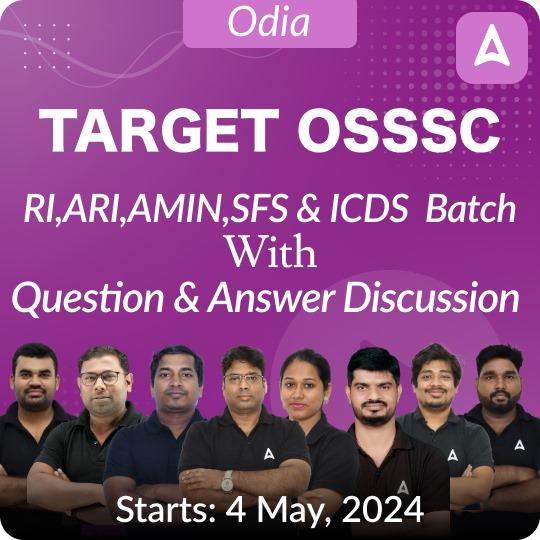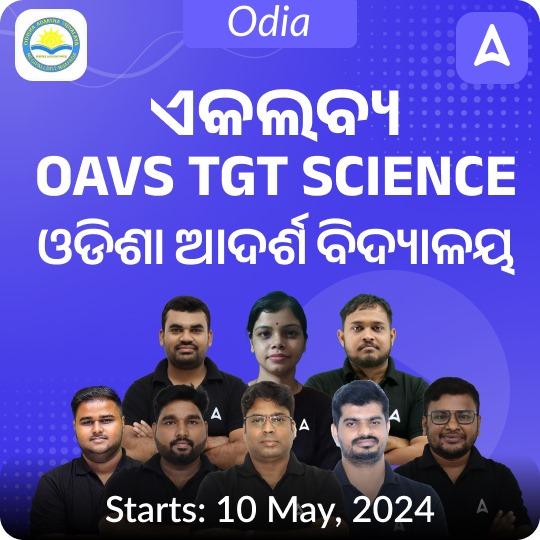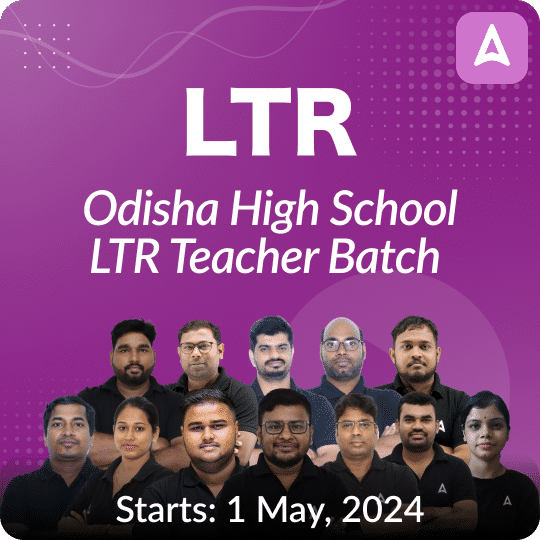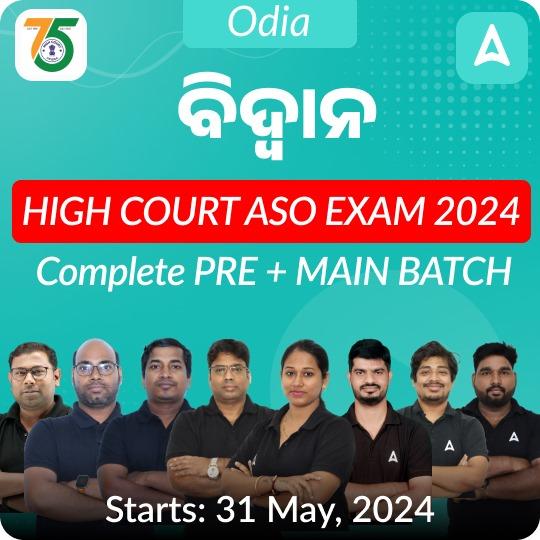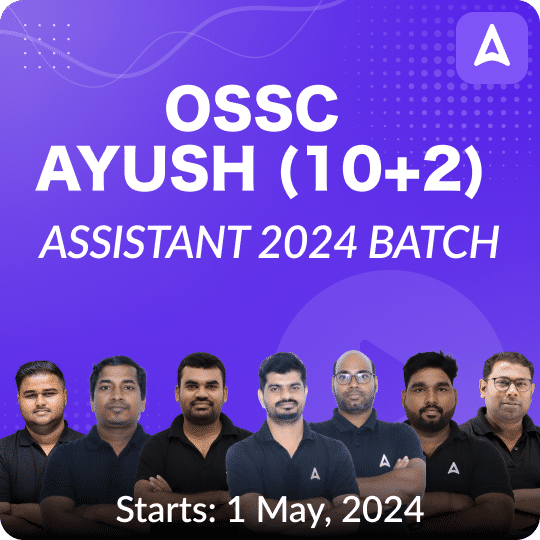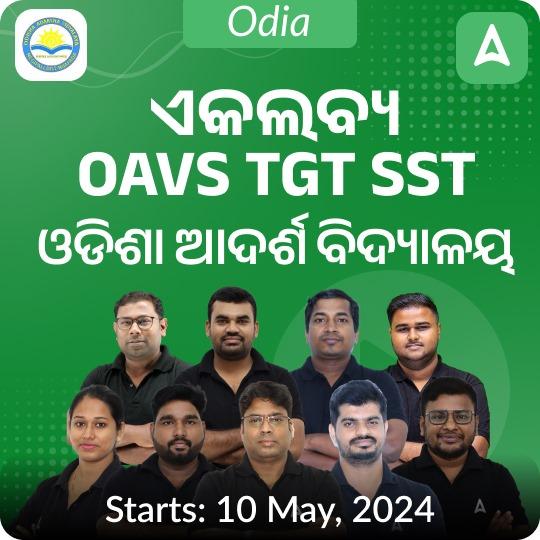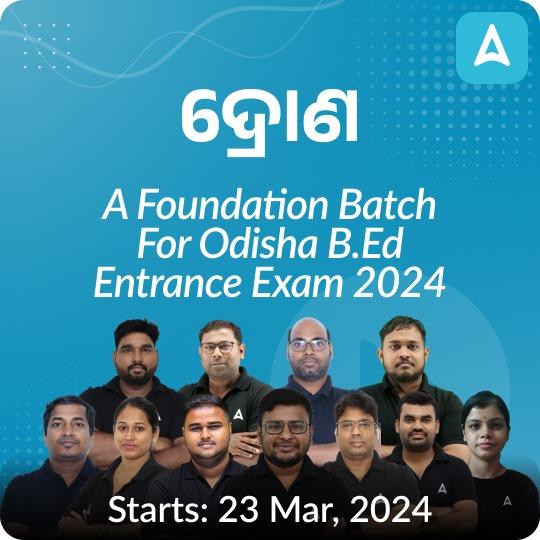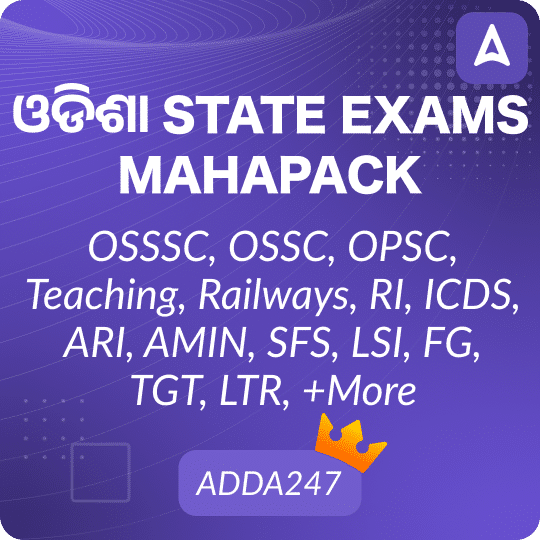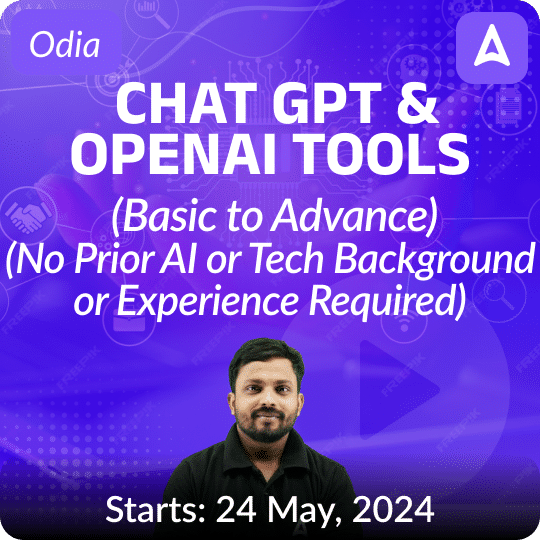Weekly Current affairs play a very important role in the competitive examinations and hence, aspirants have to give undivided attention to it while doing preparation for the government examinations. The CGLRE, OCS examinations comprise a section of “Current Affairs” to evaluate how much the aspirant is aware of the daily happenings taking place around the world. To complement your preparation, we are providing you with a compilation of Weekly Current affairs.
- Which of the following statements is true about the Preamble of the Constitution of India?
(a) It was adopted on January 26, 1949
(b) It was amended by the 42nd Amendment Act in 1976
(c) It mentions India as a “Secular” state from the beginning
(d) It declares India as a hereditary monarchy
Ans. (b) It was amended by the 42nd Amendment Act in 1976 - The term “Socialist” was added to the Preamble of the Indian Constitution by which amendment?
(a) 24th Amendment Act
(b) 42nd Amendment Act
(c) 44th Amendment Act
(d) 52nd Amendment Act
Ans. (b) 42nd Amendment Act - The Preamble of the Indian Constitution declares India to be:
(a) A Monarchy
(b) A Socialist, Secular, Democratic Republic
(c) A Federal State
(d) A Unitary State
Ans. (b) A Socialist, Secular, Democratic Republic - What is Glioblastoma?
(a) A type of heart disease
(b) A type of brain cancer
(c) A lung disorder
(d) A genetic condition affecting bones
Ans. (b) A type of brain cancer - The primary cause of Glioblastoma is:
(a) Bacterial infection
(b) DNA mutations
(c) Viral infection
(d) Fungal infection
Ans. (b) DNA mutations - Which AI technology was recently used in the study of Glioblastoma?
(a) AI to reprogram cancer cells into immune cells
(b) AI to develop new drugs
(c) AI for cancer surgery
(d) AI for radiation therapy
Ans. (a) AI to reprogram cancer cells into immune cells - What is Astra Missile?
(a) Surface-to-air missile
(b) Air-to-air missile
(c) Anti-tank missile
(d) Naval missile
Ans. (b) Air-to-air missile - The Astra missile is primarily developed by:
(a) Indian Space Research Organisation (ISRO)
(b) Defence Research and Development Organisation (DRDO)
(c) Bharat Electronics Limited (BEL)
(d) Hindustan Aeronautics Limited (HAL)
Ans. (b) Defence Research and Development Organisation (DRDO) - Astra missile is designed to target:
(a) Submarines
(b) Aircraft
(c) Tanks
(d) Drones
Ans. (b) Aircraft - Lyme disease is caused by:
(a) Bacteria
(b) Virus
(c) Fungus
(d) Parasite
Ans. (a) Bacteria - How is Lyme disease primarily transmitted?
(a) Through water
(b) By mosquitoes
(c) Through the bite of infected ticks
(d) By direct contact with infected animals
Ans. (c) Through the bite of infected ticks - Lyme disease is most commonly found in:
(a) Deserts
(b) Polar regions
(c) Forested and grassy areas
(d) Urban centers
Ans. (c) Forested and grassy areas - Which of the following countries report the most cases of Lyme disease?
(a) India
(b) Australia
(c) United States
(d) South Africa
Ans. (c) United States - WHO Global Traditional Medicine Centre (GCTM) is located in:
(a) New Delhi
(b) Mumbai
(c) Jamnagar
(d) Bangalore
Ans. (c) Jamnagar - The WHO GCTM was established under which ministry in India?
(a) Ministry of Health and Family Welfare
(b) Ministry of AYUSH
(c) Ministry of External Affairs
(d) Ministry of Science and Technology
Ans. (b) Ministry of AYUSH - The main objective of WHO GCTM is to:
(a) Promote digital health globally
(b) Harness traditional medicine using modern science
(c) Improve agricultural practices
(d) Develop vaccines for infectious diseases
Ans. (b) Harness traditional medicine using modern science - India’s financial commitment to WHO GCTM over the next 10 years is:
(a) $50 million
(b) $70 million
(c) $85 million
(d) $100 million
Ans. (c) $85 million - The Preamble of the Indian Constitution emphasizes:
(a) Military strength
(b) Economic prosperity only
(c) Social, economic, and political justice
(d) None of the above
Ans. (c) Social, economic, and political justice - Which one of the following is not a component of the Preamble of India?
(a) Liberty
(b) Inequality
(c) Fraternity
(d) Justice
Ans. (b) Inequality - The Indian Air Force (IAF) has approved the production of how many Astra air-to-air missiles?
(a) 50
(b) 100
(c) 150
(d) 200
Ans. (d) 200 - When was the Smart Cities Mission launched in India?
(a) June 25, 2015
(b) January 1, 2014
(c) March 15, 2016
(d) December 31, 2015
Ans. (a) June 25, 2015 - Which state has the highest number of smart cities under the Smart Cities Mission?
(a) Tamil Nadu
(b) Maharashtra
(c) Uttar Pradesh
(d) Karnataka
Ans. (c) Uttar Pradesh - How many smart cities are there in Odisha?
(a) 1
(b) 2
(c) 3
(d) 4
Ans. (b) 2 - Which of the following cities in Odisha are part of the Smart Cities Mission?
(a) Cuttack and Puri
(b) Bhubaneswar and Rourkela
(c) Sambalpur and Berhampur
(d) Balasore and Koraput
Ans. (b) Bhubaneswar and Rourkela - What is the primary focus of the Smart Cities Mission?
(a) Promoting rural development
(b) Creating sustainable urban infrastructure
(c) Improving agricultural productivity
(d) Developing tourism
Ans. (b) Creating sustainable urban infrastructure - Until when has the Smart Cities Mission been extended?
(a) June 30, 2024
(b) March 31, 2025
(c) December 31, 2025
(d) January 1, 2026
Ans. (b) March 31, 2025 - Kendu leaf is primarily used for which of the following purposes?
(a) Making ropes
(b) Wrapping bidis
(c) Medicinal uses
(d) Fuel
Ans. (b) Wrapping bidis - What is the GST rate imposed on Kendu Leaf?
(a) 5%
(b) 12%
(c) 18%
(d) 28%
Ans. (c) 18% - Which state is NOT a major producer of Kendu Leaf?
(a) Madhya Pradesh
(b) Chhattisgarh
(c) Odisha
(d) Punjab
Ans. (d) Punjab - Why is Kendu Leaf referred to as “green gold” in Odisha?
(a) It is a valuable medicinal herb
(b) It is a major source of livelihood for tribal communities
(c) It is used for currency exchange
(d) It is a rare plant species
Ans. (b) It is a major source of livelihood for tribal communities - Which portal is used for tracking and monitoring children in need of care and protection in India?
(a) Baal Shakti Portal
(b) Baal Swaraj Portal
(c) Child Welfare Portal
(d) KidSecure Portal
Ans. (b) Baal Swaraj Portal - Which organization manages the Baal Swaraj Portal?
(a) Ministry of Women and Child Development
(b) National Commission for Protection of Child Rights (NCPCR)
(c) UNICEF
(d) National Child Welfare Board
Ans. (b) National Commission for Protection of Child Rights (NCPCR) - How many children in India lost a single parent due to COVID-19 as per the Baal Swaraj Portal data?
(a) 1,00,000
(b) 1,50,000
(c) 1,82,671
(d) 2,00,000
Ans. (c) 1,82,671 - Which state reported the highest number of children losing a single parent due to COVID-19?
(a) Maharashtra
(b) Uttar Pradesh
(c) Odisha
(d) Karnataka
Ans. (c) Odisha - What is the primary purpose of the e-module launched by Odisha Police?
(a) To track criminals
(b) To manage arms, ammunition, and munitions inventory
(c) To monitor traffic violations
(d) To handle emergency response
Ans. (b) To manage arms, ammunition, and munitions inventory - Which feature is NOT included in the Odisha Police’s e-module for arms management?
(a) Real-time monitoring of arms
(b) Recording information about lost weapons
(c) Tracking weapon lifespan
(d) Detecting counterfeit currency
Ans. (d) Detecting counterfeit currency - The e-module introduced by Odisha Police eliminates the need for what?
(a) Firearm licenses
(b) Physical documentation
(c) Manual patrols
(d) Security checks
Ans. (b) Physical documentation - How many projects have been completed in Bhubaneswar and Rourkela under the Smart Cities Mission?
(a) 100
(b) 104
(c) 107
(d) 110
Ans. (b) 104 - What is the total cost of the projects sanctioned for Bhubaneswar and Rourkela under the Smart Cities Mission?
(a) Rs 2,000 crore
(b) Rs 3,000 crore
(c) Rs 3,589 crore
(d) Rs 4,000 crore
Ans. (c) Rs 3,589 crore - The Odisha Police’s e-module helps in tracking ammunition used during which of the following?
(a) Military training
(b) Fire exchanges
(c) Public events
(d) Border patrolling
Ans. (b) Fire exchanges - When was the Global Alliance for Improved Nutrition (GAIN) launched?
(a) 1995
(b) 2000
(c) 2002
(d) 2010
Ans: (c) 2002 - Where is the headquarters of GAIN located?
(a) New York, USA
(b) Geneva, Switzerland
(c) London, UK
(d) Paris, France
Ans: (b) Geneva, Switzerland - What is the primary mission of GAIN?
(a) To promote sustainable agriculture
(b) To reduce food wastage globally
(c) To make healthier food choices more affordable and available
(d) To support large-scale food production
Ans: (c) To make healthier food choices more affordable and available - Which sector does GAIN emphasize investing in to reduce gender inequalities?
(a) Healthcare
(b) Education
(c) Agri-food
(d) Technology
Ans: (c) Agri-food - What specific population groups does GAIN focus on improving nutrition outcomes for?
(a) Athletes
(b) Vulnerable populations
(c) Urban dwellers
(d) High-income groups
Ans: (b) Vulnerable populations - GAIN supports breastfeeding and specialized products for infants over how many months old?
(a) 3 months
(b) 6 months
(c) 9 months
(d) 12 months
Ans: (b) 6 months - Methylocucumis oryzae, recently discovered in India, belongs to which category of organisms?
(a) Algae
(b) Bacteria
(c) Fungi
(d) Protozoa
Ans: (b) Bacteria - What is the natural habitat of Methylocucumis oryzae?
(a) Deserts
(b) Oceans
(c) Wetlands and rice fields
(d) Forests
Ans: (c) Wetlands and rice fields - Which of the following best describes the shape of Methylocucumis oryzae?
(a) Spherical
(b) Rod-like
(c) Oval and elongated
(d) Spiral
Ans: (c) Oval and elongated - Why is Methylocucumis oryzae referred to as ‘methane-eating cucumbers’?
(a) Due to their color
(b) Due to their shape and function
(c) Due to their size
(d) Due to their growth environment
Ans: (b) Due to their shape and function - What is the temperature sensitivity of Methylocucumis oryzae?
(a) Grows only in cold temperatures
(b) Can grow up to 50ºC
(c) Cannot grow above 37ºC
(d) Thrives in high-temperature environments
Ans: (c) Cannot grow above 37ºC - What agricultural benefit is associated with Methylocucumis oryzae?
(a) Increased water retention in soil
(b) Promotes early flowering in rice plants
(c) Enhances pest resistance
(d) Improves soil fertility
Ans: (b) Promotes early flowering in rice plants - Which organization organized the VIRAASAT exhibition?
(a) Ministry of Culture
(b) National Handloom Development Corporation Ltd (NHDC)
(c) Ministry of Commerce
(d) Ministry of Agriculture
Ans: (b) National Handloom Development Corporation Ltd (NHDC) - VIRAASAT was organized to celebrate which event?
(a) World Handloom Day
(b) National Handicraft Day
(c) National Textile Day
(d) National Handloom Day
Ans: (d) National Handloom Day - The Swadeshi Movement, linked to National Handloom Day, was launched in which year?
(a) 1895
(b) 1905
(c) 1915
(d) 1925
Ans: (b) 1905 - When was the first National Handloom Day celebrated?
(a) 2005
(b) 2010
(c) 2015
(d) 2020
Ans: (c) 2015 - What are ‘dark patterns’ in the context of digital platforms?
(a) Cybersecurity threats
(b) Deceptive design techniques
(c) Privacy enhancements
(d) Data compression methods
Ans: (b) Deceptive design techniques - Which term was coined by Harry Brignull in 2010?
(a) Data Mining
(b) Dark Patterns
(c) Phishing
(d) Cookies
Ans: (b) Dark Patterns - Which of the following is NOT a type of dark pattern?
(a) Friend spam
(b) Sneak into basket
(c) Price reduction trick
(d) Roach motel
Ans: (c) Price reduction trick - Vampire stars are typically found in which type of stellar systems?
(a) Binary systems
(b) Single star systems
(c) Triple star systems
(d) Open clusters
Ans: (a) Binary systems - Sucralose is how many times sweeter than sugar?
(a) 100 times
(b) 200 times
(c) 400 times
(d) 600 times
Ans: (d) 600 times - Which of the following is a no-calorie sweetener?
(a) Aspartame
(b) Stevia
(c) Monk fruit
(d) Sucralose
Ans: (d) Sucralose - What percentage of consumed sucralose is excreted unchanged in the feces?
(a) 50%
(b) 75%
(c) 85%
(d) 90%
Ans: (c) 85% - Sucralose is primarily made from which substance?
(a) Fructose
(b) Glucose
(c) Sucrose
(d) Lactose
Ans: (c) Sucrose - Which of the following is NOT a characteristic of sucralose?
(a) Calorie-free
(b) Made from sucrose
(c) Absorbed and metabolized for energy
(d) Resistant to digestive enzymes
Ans: (c) Absorbed and metabolized for energy - Approximately what percentage of sucralose is absorbed but not metabolized for energy?
(a) 5%
(b) 10%
(c) 15%
(d) 20%
Ans: (c) 15% - Which organ is primarily responsible for excreting absorbed sucralose?
(a) Liver
(b) Kidneys
(c) Intestines
(d) Lungs
Ans: (b) Kidneys - Sucralose belongs to which category of sweeteners?
(a) Natural
(b) Low-calorie
(c) No-calorie
(d) Organic
Ans: (c) No-calorie - What is the primary purpose of using sucralose in foods and beverages?
(a) To increase sweetness without adding calories
(b) To provide energy
(c) To enhance flavor profiles
(d) To improve texture
Ans: (a) To increase sweetness without adding calories - Which of the following is a common application of sucralose?
(a) Baking
(b) Fermentation
(c) Preservation
(d) Coloring
Ans: (a) Baking - How does sucralose affect blood glucose levels?
(a) Increases
(b) Decreases
(c) Has no effect
(d) Significantly fluctuates
Ans: (c) Has no effect - What is the main advantage of using sucralose over traditional sugar?
(a) Lower cost
(b) Higher sweetness intensity
(c) No calorie contribution
(d) Enhanced nutrient profile
Ans: (c) No calorie contribution - Which study recently highlighted the effects of replacing sucrose with sucralose?
(a) American study
(b) European study
(c) Indian study
(d) Australian study
Ans: (c) Indian study - Sucralose can be classified under which type of sweeteners?
(a) Natural sweeteners
(b) Artificial sweeteners
(c) Low-glycemic sweeteners
(d) Organic sweeteners
Ans: (b) Artificial sweeteners - What impact does sucralose have on BMI, according to a recent study?
(a) Increases BMI
(b) Decreases BMI
(c) No impact on BMI
(d) Slight improvement in BMI
Ans: (d) Slight improvement in BMI - How does the structure of sucralose contribute to its safety?
(a) It enhances digestion
(b) It prevents digestive enzymes from breaking it down
(c) It speeds up metabolism
(d) It is easily absorbed by the body
Ans: (b) It prevents digestive enzymes from breaking it down - What happens to sucralose after it is consumed?
(a) Completely absorbed
(b) Partially absorbed and excreted
(c) Fully metabolized
(d) Remains in the body indefinitely
Ans: (b) Partially absorbed and excreted - Which of the following best describes sucralose’s calorie contribution?
(a) High-calorie
(b) Low-calorie
(c) No-calorie
(d) Variable-calorie
Ans: (c) No-calorie - How is sucralose excreted from the body?
(a) Through sweat
(b) Through the lungs
(c) Through urine and feces
(d) Through skin pores
Ans: (c) Through urine and feces - Which of the following is a key characteristic of artificial sweeteners like sucralose?
(a) High natural sugar content
(b) Calorie-free sweetness
(c) Organic production
(d) Digestive absorption
Ans: (b) Calorie-free sweetness - Why did the Union Government recently address the Bhoj Wetland?
(a) Threat of delisting from the Ramsar Convention
(b) Proposal for expansion
(c) Management issues
(d) Water quality concerns
Answer: (a) Threat of delisting from the Ramsar Convention - What is the primary significance of the Upper Lake in Bhoj Wetland?
(a) Wildlife sanctuary
(b) Major source of potable water for Bhopal
(c) Agricultural irrigation
(d) Tourism attraction
Answer: (b) Major source of potable water for Bhopal - Which national park borders the southern edge of the Upper Lake in Bhoj Wetland?
(a) Kanha National Park
(b) Van Vihar National Park
(c) Bandhavgarh National Park
(d) Pench National Park
Answer: (b) Van Vihar National Park - What are the two main reservoirs of the Bhoj Wetland?
(a) Chhota Talaab and Moti Talaab
(b) Upper Lake and Lower Lake
(c) Bada Talaab and Pichola Lake
(d) Bhojtal and Bansal Lake
Answer: (b) Upper Lake and Lower Lake - What is the recent development in Chhattisgarh related to wildlife?
(a) Establishment of a new national park
(b) Declaration of a new biosphere reserve
(c) Establishment of a new tiger reserve
(d) Expansion of an existing wildlife sanctuary
Answer: (c) Establishment of a new tiger reserve - Which rivers are significant to the Guru Ghasidas-Tamor Pingla Tiger Reserve?
(a) Ganges and Yamuna
(b) Hasdeo Gopad and Baranga
(c) Godavari and Krishna
(d) Mahanadi and Narmada
Answer: (b) Hasdeo Gopad and Baranga - Guru Ghasidas-Tamor Pingla Tiger Reserve is located in which part of Chhattisgarh?
(a) Southern
(b) Eastern
(c) Northern
(d) Western
Answer: (c) Northern - What was Guru Ghasidas Park originally a part of?
(a) Sanjay Dubri National Park
(b) Achanakmar Wildlife Sanctuary
(c) Kanha National Park
(d) Indravati Tiger Reserve
Answer: (a) Sanjay Dubri National Park - When was the National Coastal Mission Scheme launched?
(a) 2012
(b) 2014
(c) 2016
(d) 2018
Answer: (b) 2014 - Under which plan was the National Coastal Mission Scheme envisioned?
(a) National Renewable Energy Plan
(b) National Action Plan on Climate Change
(c) National Environmental Policy
(d) National Coastal Management Program
Answer: (b) National Action Plan on Climate Change - Which component of the National Coastal Mission Scheme focuses on beach environment management?
(a) Management Action Plan
(b) Research & Development
(c) Sustainable Development of Beaches
(d) Capacity Building & Outreach
Answer: (c) Sustainable Development of Beaches - Which government body is responsible for implementing the National Coastal Mission Scheme?
(a) Central Government
(b) State Governments of Coastal States and UT Administrations
(c) Non-Governmental Organizations
(d) Private Sector
Answer: (b) State Governments of Coastal States and UT Administrations - What significant change does the Waqf (Amendment) Bill, 2024 propose regarding property classification?
(a) Shifting responsibility to the Central Government
(b) Replacing waqfnama with oral agreements
(c) Designating the District Collector as the primary authority
(d) Eliminating Waqf Boards
Answer: (c) Designating the District Collector as the primary authority - What new body does the Waqf (Amendment) Bill, 2024 propose to establish?
(a) National Waqf Council
(b) Central Waqf Council
(c) State Waqf Council
(d) Local Waqf Committee
Answer: (b) Central Waqf Council - Who is proposed to have representation in the new Central Waqf Council?
(a) Only Muslim members
(b) Muslim women and non-Muslims
(c) Only non-Muslims
(d) Members from all religions equally
Answer: (b) Muslim women and non-Muslims - What does the Waqf (Amendment) Bill, 2024 mandate regarding waqfnama?
(a) No need for waqfnama
(b) Oral agreements are sufficient
(c) Valid waqfnama required for dedicating property
(d) Waiver of documentation requirement
Answer: (c) Valid waqfnama required for dedicating property - Rashtriya Vigyan Puraskar (RVP)
Which team received the Vigyan Team Award in the first-ever Rashtriya Vigyan Puraskar (RVP) 2024?
(a) ISRO-Chandrayaan 3 Team
(b) DRDO Team
(c) ISRO-Mangalyaan Team
(d) Bhabha Atomic Research Centre Team
Answer: (a) ISRO-Chandrayaan 3 Team - Who was awarded the Vigyan Ratna Puraskar in 2024?
(a) C.V. Raman
(b) A.P.J. Abdul Kalam
(c) Govindarajan Padmanabhan
(d) Vikram Sarabhai
Answer: (c) Govindarajan Padmanabhan - What is the primary objective of the Rashtriya Vigyan Puraskar (RVP)?
(a) To support scientific research
(b) To recognize notable contributions in science, technology, and innovation
(c) To fund scientific projects
(d) To provide scholarships to scientists
Answer: (b) To recognize notable contributions in science, technology, and innovation - When is the award ceremony for the Rashtriya Vigyan Puraskar (RVP) scheduled?
(a) 15th August
(b) 23rd August
(c) 30th August
(d) 5th September
Answer: (b) 23rd August - Which Buddhist sites in Odisha are being proposed for inclusion in the UNESCO World Heritage List?
(a) Jagannath Temple, Puri
(b) Udayagiri, Lalitgiri, Langudi, and Ratnagiri
(c) Konark Sun Temple and Jagannath Temple
(d) Qutub Minar and Red Fort
Ans: (b) Udayagiri, Lalitgiri, Langudi, and Ratnagiri - What significant decision was made during the 46th session of the World Heritage Committee of UNESCO held in New Delhi?
(a) Addition of new natural sites
(b) Inclusion of Odisha’s Buddhist sites in the World Heritage List
(c) Removal of existing sites from the list
(d) Expansion of the criteria for cultural heritage
Ans: (b) Inclusion of Odisha’s Buddhist sites in the World Heritage List - What year was the UNESCO World Heritage List established?
(a) 1970
(b) 1980
(c) 1972
(d) 1990
Ans: (c) 1972 - Which of the following is NOT a criterion for UNESCO World Heritage status?
(a) Cultural heritage
(b) Natural heritage
(c) Architectural modernism
(d) Historical significance
Ans: (c) Architectural modernism - How many UNESCO World Heritage Sites does India currently have?
(a) 43
(b) 50
(c) 30
(d) 35
Ans: (a) 43 - Which of the following was India’s first UNESCO World Heritage Site?
(a) Red Fort
(b) Qutub Minar
(c) Ajanta Caves
(d) Sun Temple at Konarak
Ans: (c) Ajanta Caves - What scheme is being implemented in Odisha for child protection and welfare?
(a) Beti Bachao Beti Padhao
(b) Mission Vatsalya
(c) Integrated Child Development Services
(d) Pradhan Mantri Matru Vandana Yojana
Ans: (b) Mission Vatsalya - Which benefits has the Ministry of Women and Child Development directed Odisha to extend to Mission Vatsalya contractual staff?
(a) Health insurance only
(b) EPF and insurance
(c) Additional leave benefits
(d) Housing allowance
Ans: (b) EPF and insurance - When was Mission Vatsalya introduced as a replacement for the Child Protection Services Scheme?
(a) 2005
(b) 2010
(c) 2009-10
(d) 2008
Ans: (c) 2009-10 - What is the primary goal of the Advanced Emergency Care System (EMS) pilot project?
(a) Increase health insurance coverage
(b) Reduce preventable and treatable mortality rates
(c) Expand hospital infrastructure
(d) Improve vaccination coverage
Ans: (b) Reduce preventable and treatable mortality rates - Which district in Odisha is selected as a pilot location for the Advanced Emergency Care System (EMS)?
(a) Berhampur
(b) Cuttack
(c) Puri
(d) Sambalpur
Ans: (c) Puri - Which of the following features is NOT a part of the rice ATM initiative in Bhubaneswar?
(a) Automated dispensing
(b) Biometric authentication
(c) Ability to withdraw cash
(d) Transparency and efficiency
Ans: (c) Ability to withdraw cash - What is the main purpose of the Public Distribution System (PDS) in India?
(a) Provide free healthcare
(b) Manage food scarcity and ensure food security
(c) Subsidize housing costs
(d) Supply educational materials
Ans: (b) Manage food scarcity and ensure food security - Which state has the maximum number of UNESCO World Heritage Sites in India?
(a) Maharashtra
(b) Uttar Pradesh
(c) Rajasthan
(d) Tamil Nadu
Ans: (b) Uttar Pradesh - Which of the following is NOT a key feature of Mission Vatsalya?
(a) Central Sponsorship
(b) Focus on Child Welfare
(c) Support for foreign children
(d) Rehabilitation and Reintegration
Ans: (c) Support for foreign children - Which health emergencies are covered under the EMS pilot project?
(a) Diabetes and hypertension
(b) Heart attack, brain stroke, trauma, snake bite, poisoning, neonatal and maternal complications
(c) Cancer and respiratory diseases
(d) Allergies and skin conditions
Ans: (b) Heart attack, brain stroke, trauma, snake bite, poisoning, neonatal and maternal complications - What is a primary challenge faced by the Public Distribution System (PDS) in India?
(a) Excessive coverage
(b) Efficient operation
(c) Leakages and corruption
(d) Overfunding
Ans: (c) Leakages and corruption - What innovative feature does the rice ATM in Bhubaneswar offer to improve food distribution?
(a) Manual distribution of food items
(b) Automated dispensing of rice
(c) Cashless transactions
(d) Home delivery services
Ans: (b) Automated dispensing of rice - Which central government scheme focuses on the care and protection of children in difficult circumstances?
(a) National Child Labour Project
(b) Integrated Child Protection Scheme
(c) Mission Vatsalya
(d) Child Development Project
Ans: (c) Mission Vatsalya - Which state is NOT one of the pilot locations for the Advanced Emergency Care System (EMS)?
(a) Vidisha
(b) Vadodara
(c) Puducherry
(d) Kochi
Ans: (d) Kochi - What is the primary objective of the Kasturi Cotton Bharat initiative?
(a) To increase the export of Indian cotton
(b) To create premium value for Indian cotton through traceability, certification, and branding
(c) To standardize cotton production methods across India
(d) To support cotton ginners with financial subsidies
Answer: (b) To create premium value for Indian cotton through traceability, certification, and branding - Which technology is used for certification in the Kasturi Cotton Bharat program?
(a) RFID-based certification
(b) QR code certification technology
(c) Bar-code certification technology
(d) GPS-based tracking
Answer: (b) QR code certification technology - When was the Kasturi Cotton Bharat program formalized?
(a) 10 October 2022
(b) 15 December 2022
(c) 1 January 2023
(d) 5 November 2022
Answer: (b) 15 December 2022 - What does the Nandini Sahakar Yojana aim to support?
(a) Large-scale industrial cooperatives
(b) International trade of cooperative products
(c) Women cooperatives in business model-based activities
(d) Technical training for cooperative members
Answer: (c) Women cooperatives in business model-based activities - What is a key eligibility criterion for women cooperatives under the Nandini Sahakar Yojana?
(a) Registration under any State/Central Act or minimum of 50% women as primary members
(b) Operational for at least six months
(c) Maximum financial assistance limit of ₹50 lakhs
(d) Existence of a formal partnership with a financial institution
Answer: (a) Registration under any State/Central Act or minimum of 50% women as primary members - Why was a state of emergency declared in Kursk?
(a) Economic collapse
(b) Natural disaster
(c) Ukrainian incursion into the Russian border region
(d) Political unrest
Answer: (c) Ukrainian incursion into the Russian border region - Kursk is historically significant for which major World War II event?
(a) The Siege of Stalingrad
(b) The Battle of Kursk
(c) The Battle of Moscow
(d) The Invasion of Normandy
Answer: (b) The Battle of Kursk - What is the primary cause of Monkeypox (Mpox)?
(a) A bacterial infection
(b) A viral zoonotic disease
(c) A parasitic infection
(d) A fungal infection
Answer: (b) A viral zoonotic disease - Where was the first human case of Monkeypox recorded?
(a) Nigeria
(b) Central African Republic
(c) Democratic Republic of the Congo
(d) Ghana
Answer: (c) Democratic Republic of the Congo - What is the primary difference between ground-level ozone and the ozone layer in the upper atmosphere?
(a) Ground-level ozone is a pollutant, while the ozone layer protects against UV radiation
(b) Ground-level ozone is beneficial, while the upper atmosphere ozone is harmful
(c) Ground-level ozone forms at high altitudes, while upper atmosphere ozone forms at the surface
(d) There is no significant difference
Answer: (a) Ground-level ozone is a pollutant, while the ozone layer protects against UV radiation - What causes the formation of ground-level ozone?
(a) Reactions between carbon monoxide and sulfur dioxide
(b) Reactions between volatile organic compounds (VOCs) and nitrogen oxides (NOₓ) in sunlight
(c) Direct emissions from industrial processes
(d) Chemical reactions with ozone-depleting substances
Answer: (b) Reactions between volatile organic compounds (VOCs) and nitrogen oxides (NOₓ) in sunlight - Which of the following is a common source of VOCs and NOₓ?
(a) Tree pollen
(b) Vehicle emissions
(c) Soil erosion
(d) Ocean currents
Answer: (b) Vehicle emissions - How does ground-level ozone affect human health?
(a) It improves respiratory function
(b) It causes respiratory issues and aggravates asthma
(c) It enhances lung capacity
(d) It prevents respiratory infections
Answer: (b) It causes respiratory issues and aggravates asthma - What is the impact of ground-level ozone on the environment?
(a) It promotes plant growth
(b) It damages crops and reduces agricultural yields
(c) It enhances biodiversity
(d) It protects forests from pests
Answer: (b) It damages crops and reduces agricultural yields - Which organization recently held an emergency meeting about Monkeypox (Mpox)?
(a) United Nations
(b) World Health Organization (WHO)
(c) Centers for Disease Control and Prevention (CDC)
(d) International Red Cross
Answer: (b) World Health Organization (WHO) - What is the historical significance of Kursk?
(a) It was the site of a major political treaty
(b) It is one of the oldest cities in Russia and site of the largest tank battle in history
(c) It hosted the first Russian space launch
(d) It was the location of a famous Russian art exhibition
Answer: (b) It is one of the oldest cities in Russia and site of the largest tank battle in history - Which component of smog is also known as ground-level ozone?
(a) Carbon dioxide
(b) Nitrogen dioxide
(c) Volatile organic compounds
(d) Ozone (O₃)
Answer: (d) Ozone (O₃) - Under the Nandini Sahakar Yojana, what type of financial assistance is provided?
(a) Fixed amount based on project size
(b) No minimum or maximum limit on financial assistance
(c) Only short-term loans
(d) Grants for infrastructure development only
Answer: (b) No minimum or maximum limit on financial assistance - How does ground-level ozone affect vegetation?
(a) It boosts photosynthesis
(b) It interferes with the ability of plants to photosynthesize
(c) It strengthens plant immune systems
(d) It has no effect on plants
Answer: (b) It interferes with the ability of plants to photosynthesize - What is a unique feature of the Kasturi Cotton Bharat program?
(a) It uses GPS technology for certification
(b) It employs a blockchain-based software platform for traceability
(c) It focuses solely on increasing cotton yield
(d) It is only promoted at the national level
Answer: (b) It employs a blockchain-based software platform for traceability - What was the primary aim of Exercise Udara Shakti 2024?
(a) Combat readiness enhancement
(b) Humanitarian aid
(c) Diplomatic negotiations
(d) Environmental conservation
Ans: (a) Combat readiness enhancement - Where was Exercise Udara Shakti 2024 conducted?
(a) Delhi, India
(b) Kuantan, Malaysia
(c) Singapore
(d) Jakarta, Indonesia
Ans: (b) Kuantan, Malaysia - Which aircraft participated in the exercise?
(a) F-16 Fighting Falcon
(b) Su-30MKI and Su-30MKM
(c) Mirage 2000
(d) Eurofighter Typhoon
Ans: (b) Su-30MKI and Su-30MKM - What was the focus of Exercise Udara Shakti 2024?
(a) Space exploration
(b) Naval warfare
(c) Enhancing interoperability of Su-30 aircraft
(d) Cybersecurity
Ans: (c) Enhancing interoperability of Su-30 aircraft - How often does Neelakurinji bloom?
(a) Every year
(b) Every 5 years
(c) Every 12 years
(d) Every 20 years
Ans: (c) Every 12 years - What is the habitat elevation range for Neelakurinji?
(a) 500–1,000 meters
(b) 1,000–1,500 meters
(c) 1,340–2,600 meters
(d) 2,500–3,000 meters
Ans: (c) 1,340–2,600 meters - Where is Neelakurinji found?
(a) Himalayan region
(b) Western Ghats
(c) Eastern Ghats
(d) Desert regions
Ans: (b) Western Ghats - What is the conservation status of Neelakurinji according to the IUCN?
(a) Least Concern
(b) Near Threatened
(c) Vulnerable
(d) Endangered
Ans: (c) Vulnerable - What is the primary objective of the Clean Plant Programme?
(a) Export plant material
(b) Ensure virus-free planting material for farmers
(c) Develop synthetic plant varieties
(d) Reduce import duties on plant materials
Ans: (b) Ensure virus-free planting material for farmers - How many Clean Plant Centers (CPCs) will be established?
(a) 5
(b) 7
(c) 9
(d) 11
Ans: (c) 9



